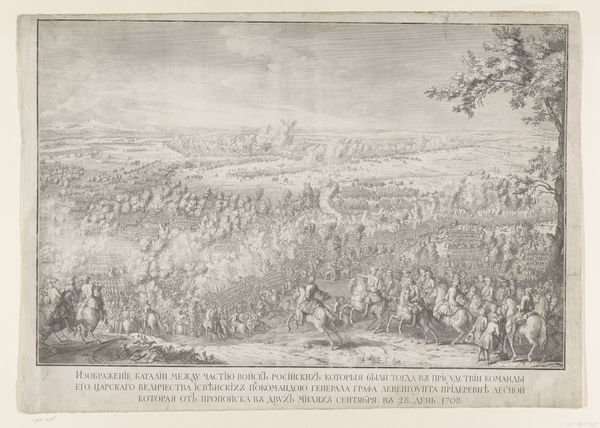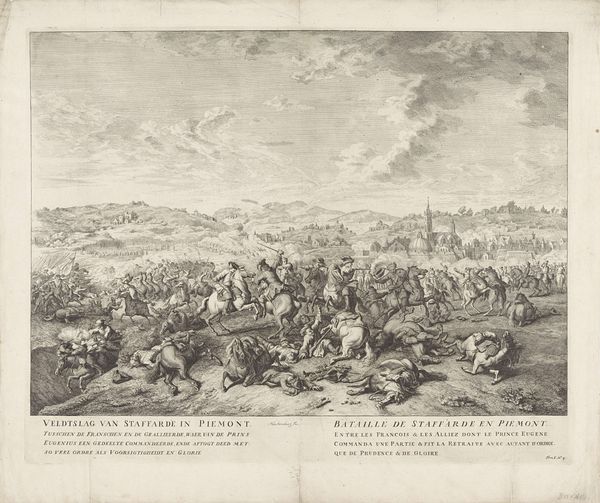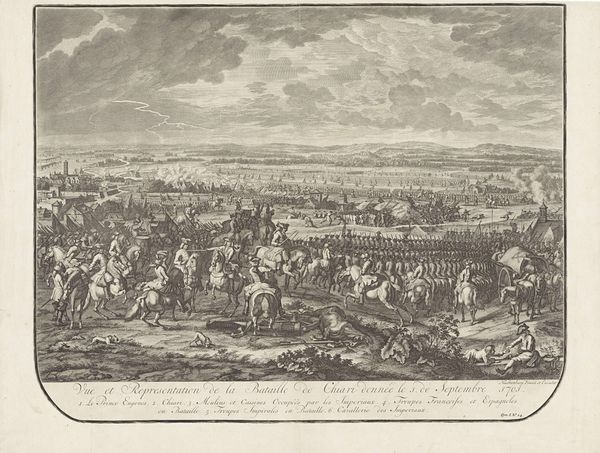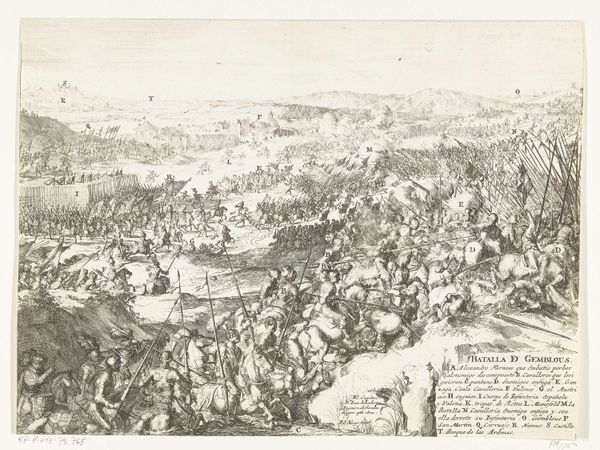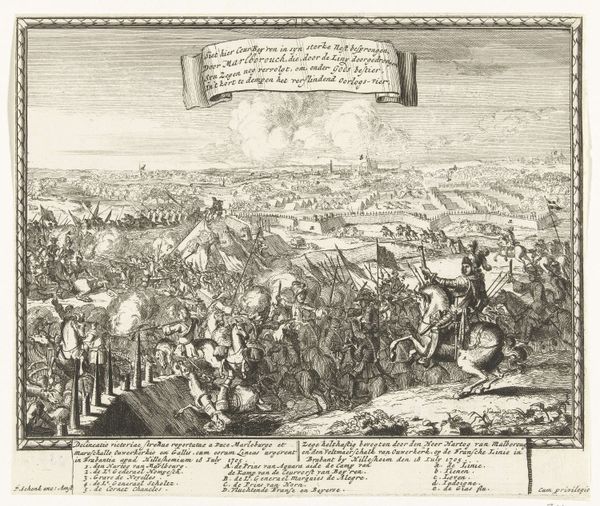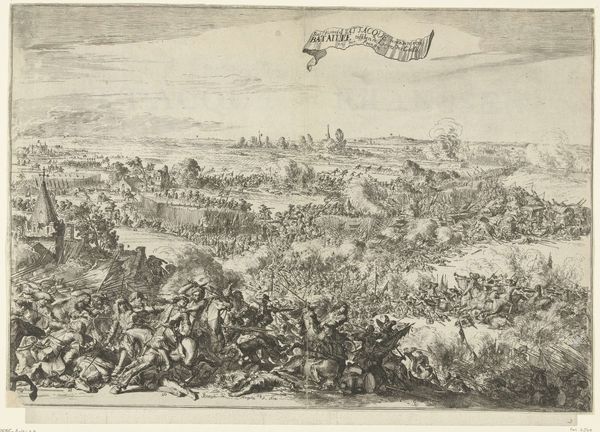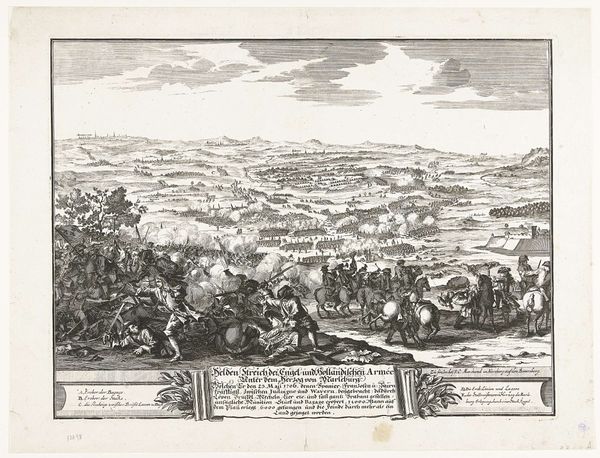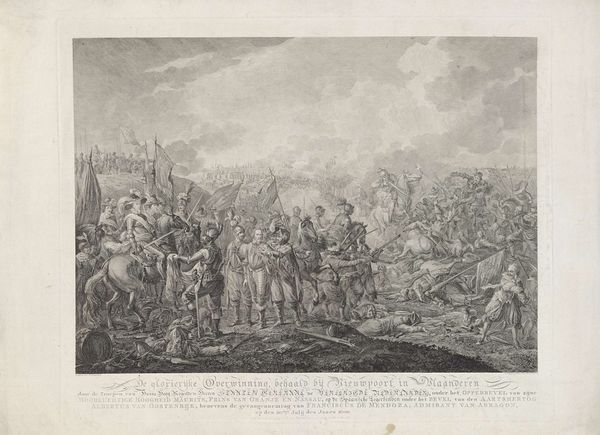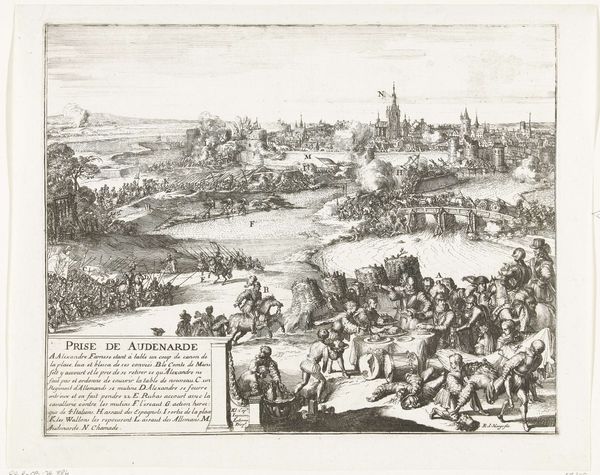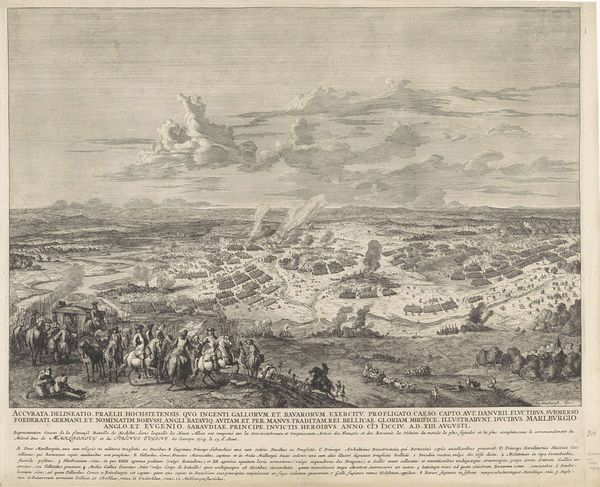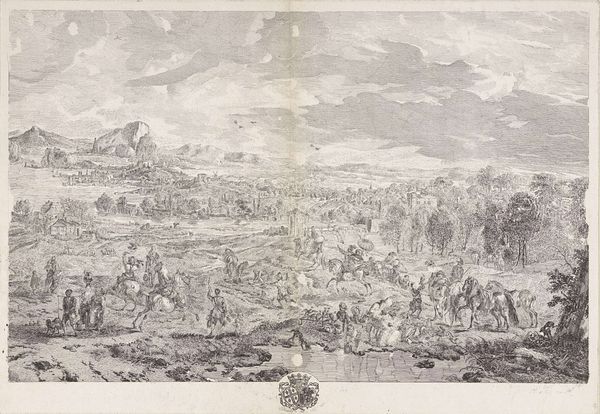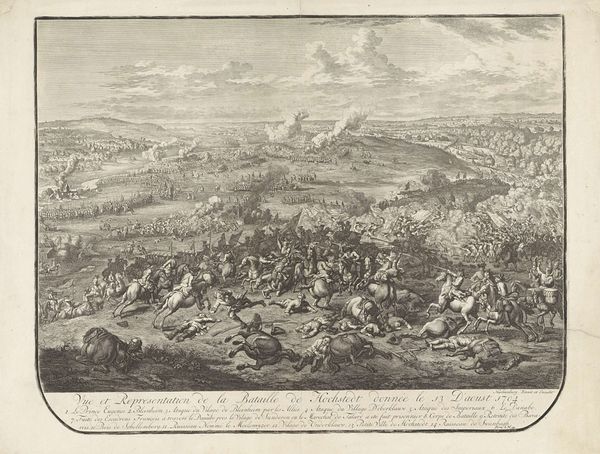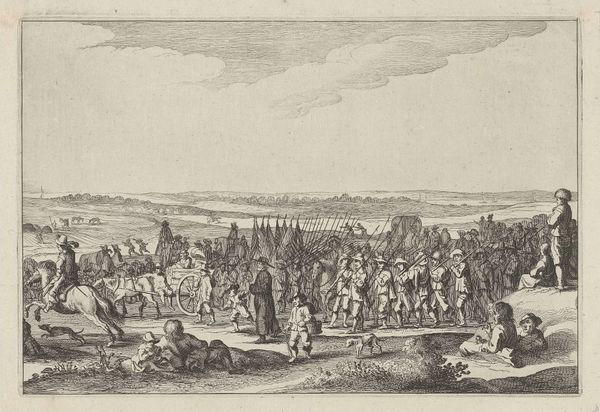
print, engraving
#
baroque
# print
#
old engraving style
#
landscape
#
genre-painting
#
history-painting
#
engraving
Dimensions: height 540 mm, width 760 mm
Copyright: Rijks Museum: Open Domain
Maurice Baquoy created this print titled ‘Overgave bij Perevolochna, 1709’ sometime in the early 18th century. It depicts the surrender of the Swedish army to the Russians, and the end of the Battle of Poltava. Prints like these were a popular means of disseminating information and shaping public opinion in the 18th century. Baquoy, as the artist, would have been influenced by the political and cultural context of his time. France, like many European nations, was experiencing significant social and political change. Wars, religious conflicts, and courtly life all shaped the narratives that artists chose to represent. The print attempts to capture a moment of defeat, but also hints at the complexities of power, national identity, and the human cost of war. What narratives are left out of this ‘history’? Consider those who were impacted by the battle, the people erased from its representation. What does it mean to surrender? What does it mean to witness? The artwork serves as a reminder of how historical events are mediated through art, reflecting societal values, biases, and the ever-present human condition.
Comments
No comments
Be the first to comment and join the conversation on the ultimate creative platform.
